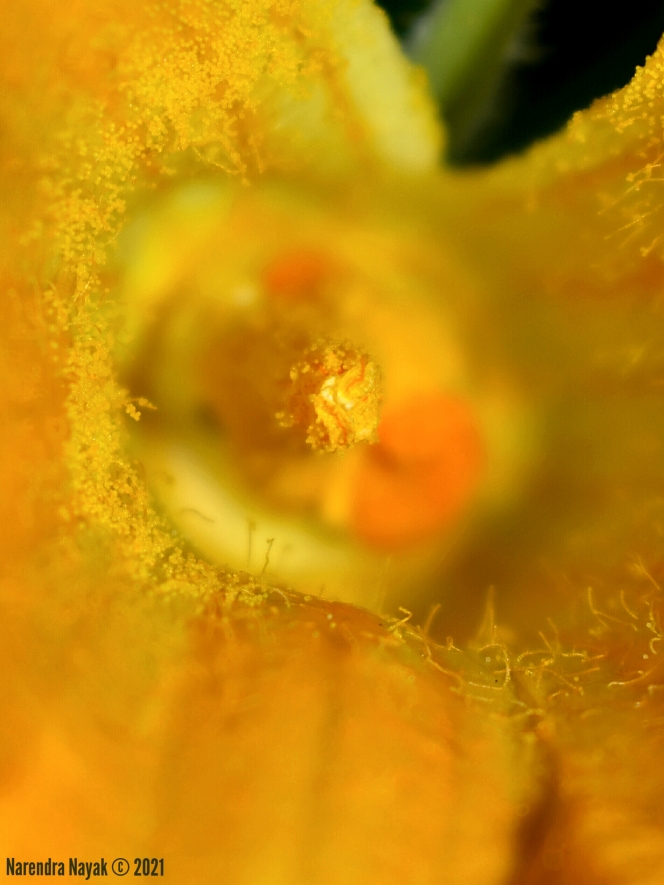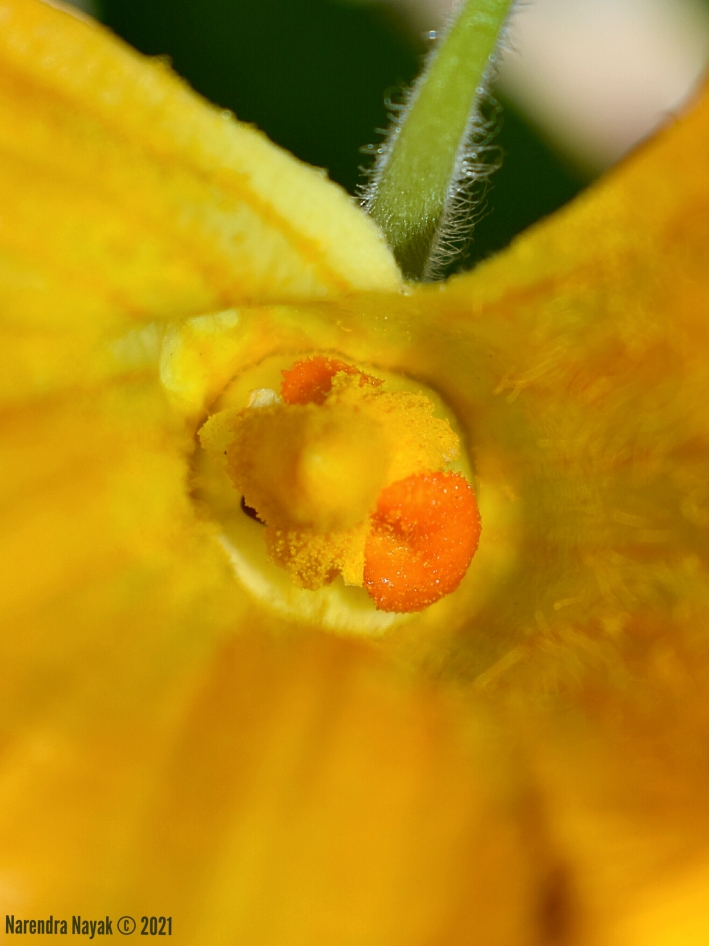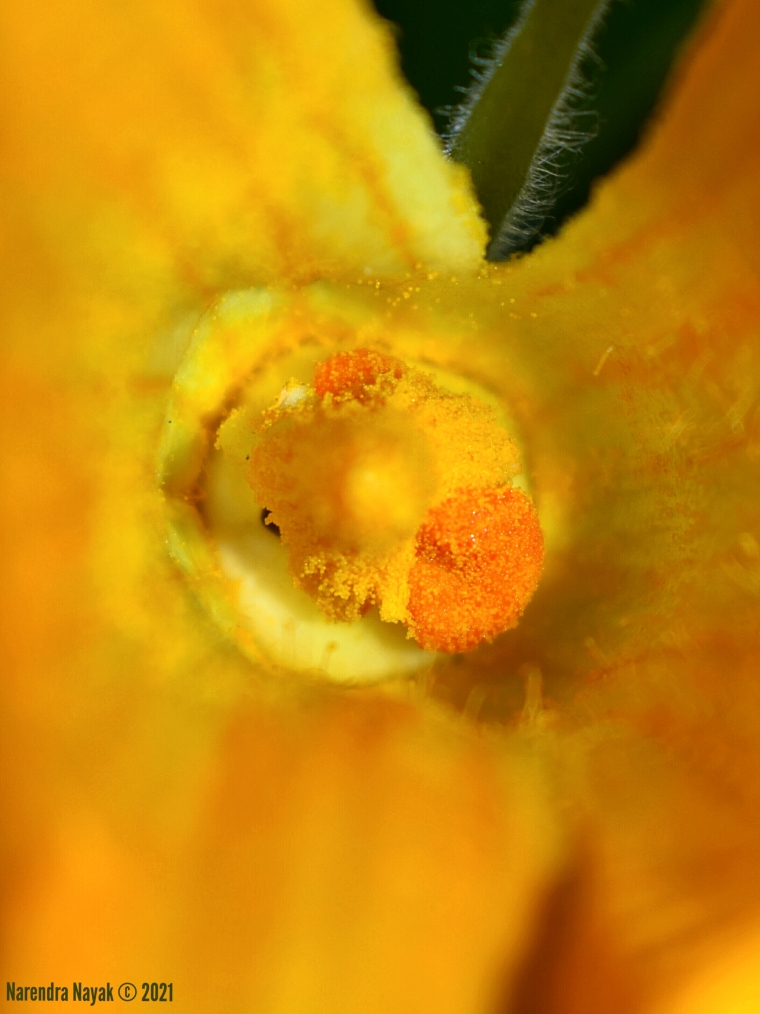Though Dr. Ian Malcolm’s profound and by now iconic assertion “Life, uh, finds a way” in Jurassic Park was in reference to the survival and proliferation of genetically engineered dinosaurs, it is not wrong to associate this statement with the real world where millions of species fight for survival against each other and more often against humans – a fight for a habitat. What evokes this thought is that on a watered down scale, we see this struggle and often victorious battles fought in our own backyard – in plant, insect and some urbanised lower animal species through adaptation and microevolution. One such adaptation is the subject of this narrative – my pumpkin plant.
Before rushing into the “what happened” part, let me take a long moment to explain the “this is so complicated” portion. A pumpkin plant is monoecious, i.e., the flowers are unisexual – either male or female – but both types of flowers grow on the same plant. For the first two weeks or so only male flowers emerge; they attract insects in the vicinity and get them used to the availability of nectar, so that when the female flowers – which are obviously fewer – bloom, the insects are around in large numbers to assist in pollination.
It was only a few weeks back that my pumpkin plant started sprouting flower buds – an eagerly awaited event for us all – and with it arose the expected quandary. Tender pumpkin male flower buds, sautéed or breaded and deep fried, are a delicacy and fresh home-grown ones at that weighed heavily in favour of harvesting them at the opportune moment of their maturity. But two factors luckily put paid to this nefarious intent. Firstly, I wanted all flowers to bloom so that the pollinators could enjoy a feast of nectar (and I could observe the visitors), and secondly our flower buds were emerging sequentially – at the rate of one a day in the axil of each new leaf – and these would therefore also mature in that sequence and never together.
Luckily an amicable and bloodless solution was worked out vide which I would allow all the flowers to bloom (which I found was typically from 5 am to 12 noon) and once they started drooping I would harvest and store them under refrigeration; and eventually when a substantial quantity was collected we would have a feast. This trivial issue was thus sorted, but a bigger one allied to the larger objective – a pumpkin fruit – remained!
Given the sequential flowering it was obvious that the day a female flower would bloom, there would be no male flower around to pollinate it. Even if I did allow the previous day’s male flower to still be around on the plant it would be of no use, since once the flower droops the petals fuse together and there is no way a pollinator can get through to the pollen. It was thus essential that a male flower should bloom on the same day as the female one; but with no other pumpkin plant around, the chance of a female flower getting pollinated and eventually yielding a pumpkin was nil.
There were two feasible options and it was decided that both would be brought into play leading up to this next anticipated event. Firstly, the male flower blooming immediately preceding the day the female flower was expected to blossom (the female flower has distinct external morphology and is easily identified from that of a male) would be left undisturbed on the plant itself and the petals cut open the next day exposing the pollen to the pollinators. Secondly, as backup for assisted pollination, the mature anthers of the male flowers blooming a few days prior would be collected and the pollen divided into three portions – stored at room temperature, chilled at 3 deg C, and frozen at -19 deg C.
And thus we ran with the plan. With six male flowers in the refrigerator in as many days and the truant female flower not on the horizon for a while, it looked like imminent party time soon. And then it happened! By now it had become a daily habit to gently turn around the flower of the day towards me (which would be up and away facing the sky) peep inside to ogle at the visitors and take photographs. That fine day too I turned the flower around and froze – alongside the usual centrally located fused deep yellow anther lobes seen in a male flower, I could distinctly see, to one side and just below the anthers, an orange stigma! This flower was bisexual! The stigma had already gathered some pollen; nevertheless, I dusted off the anthers with a paintbrush and covered it with more – just in case.
The initial euphoria over, text books of Botany were brought out, Google consulted, and collective Botany knowledge – my dated one of 1991 and Junior’s updated one of 2021 – were referred to. It emerged that in certain conditions of physical and ecological duress (I am yet studying and trying to pinpoint the definite reasons in this case) certain Cucurbits have a propensity to turn trimonoecious – male, female and bisexual flowers growing on the same plant.
So here was an ordinary (?) pumpkin plant which had come up with self-pollination as a perfect solution to propagate under these typical circumstances existing in my home garden. In one fell swoop but with an indisputably complex sequence of logic and background processes, Nature had bested the human ego which thought it could play God. And for once I was delighted to be beaten!

Picture A
Anthers of a male pumpkin flower
Picture B
Anthers (yellow) of a bisexual pumpkin flower
Picture C
Stigma (orange) of a bisexual pumpkin flower
Picture D
A paintbrush with pumpkin pollen
Picture E
Stigma of a bisexual pumpkin flower before assisted pollination
Picture F
Stigma of a bisexual pumpkin flower after assisted pollination
[All pictures are labelled for easy identification:
Picture A: anthers of a male pumpkin flower
Picture B: anthers (yellow) of a bisexual pumpkin flower
Picture C: stigma (orange) of a bisexual pumpkin flower
Picture D: a paintbrush with pumpkin pollen
Picture E: stigma of a bisexual pumpkin flower before assisted pollination
Picture F: stigma of a bisexual pumpkin flower after assisted pollination]
– Narendra Nayak © 2021


A nice journal.
LikeLiked by 1 person
Thanks a lot, Rupali!
LikeLiked by 1 person
Amazing….so much for the unassuming (well, not as unassuming though) pumpkin.
And, talk about adaptability!
The amicable and bloodless solution was a good one. I love the fried flowers and haven’t had them in a while now.
Waiting for the fruit now with all it’s accompanied paraphernalia.
Great pictures as always and wonderfully narrated. I could visualize the entire chronology of events.
Wishing you and junior some great pumpkin times ahead. 😀
LikeLiked by 1 person
Thank you so very much, Neelanjana, for reading and for your lovely comments. 🙏🏻🙂
We’re truly having a great time gardening in our limited window box grill space of 8ft x 1 ft. All this experimentation is a good learning experience on the methods, problems and solutions of growing our own food. Let’s see where it all leads me…
LikeLike
Very knowledgeable article. 🌝
LikeLiked by 1 person
Thanks a lot, Suni! 🙂
LikeLiked by 1 person
I don’t know where to find these flowers in Mumbai. Missing out on a great food.
LikeLike
In Mumbai you’ll find these with either tribal ladies/vegetable street vendors sitting outside suburban railway stations (Goregaon, Malad, Borivali), or the “Vasai sabji wallas”, or even the street vendors just outside Dadar station. This season they’re priced at Rs. 20 for 5 nos.
LikeLiked by 1 person
Thanks
LikeLiked by 1 person
Something about Nature knows best how to organize…?
Great post!
LikeLiked by 1 person
Mother (nature) knows best! 🙂
Thanks a lot for reading, Ma’am!
LikeLike
Fascinating, I make chutney from the flowers 😊
LikeLiked by 1 person
Thank you, Ma’am. 🙂
A chutney sounds interesting – I will have to try that one!
LikeLiked by 1 person
Nice pumpkin blossom 🤩
LikeLiked by 1 person
Thank you!
LikeLiked by 1 person
There is definitely nothing ordinary about this pumpkin plant. Nor about your patient and detailed observations and reporting. Thank you, Narendra, I’m in awe.
LikeLiked by 1 person
Thank you so very much, Tanja, for such kind and encouraging words! 🙂
Nature works in such mysterious ways but She is ready to share her secrets; if only you wish to learn…
LikeLiked by 1 person
That’s right, Narendra. I regret not having paid attention for so many years of my life.
LikeLiked by 1 person
It’s never too late, Tanja. You’re doing very well now and Mother Nature will embrace you so lovingly… 🙂
LikeLiked by 1 person
That’s a lovely thought, Narendra. I look forward to it each day. 🙂
LikeLiked by 1 person